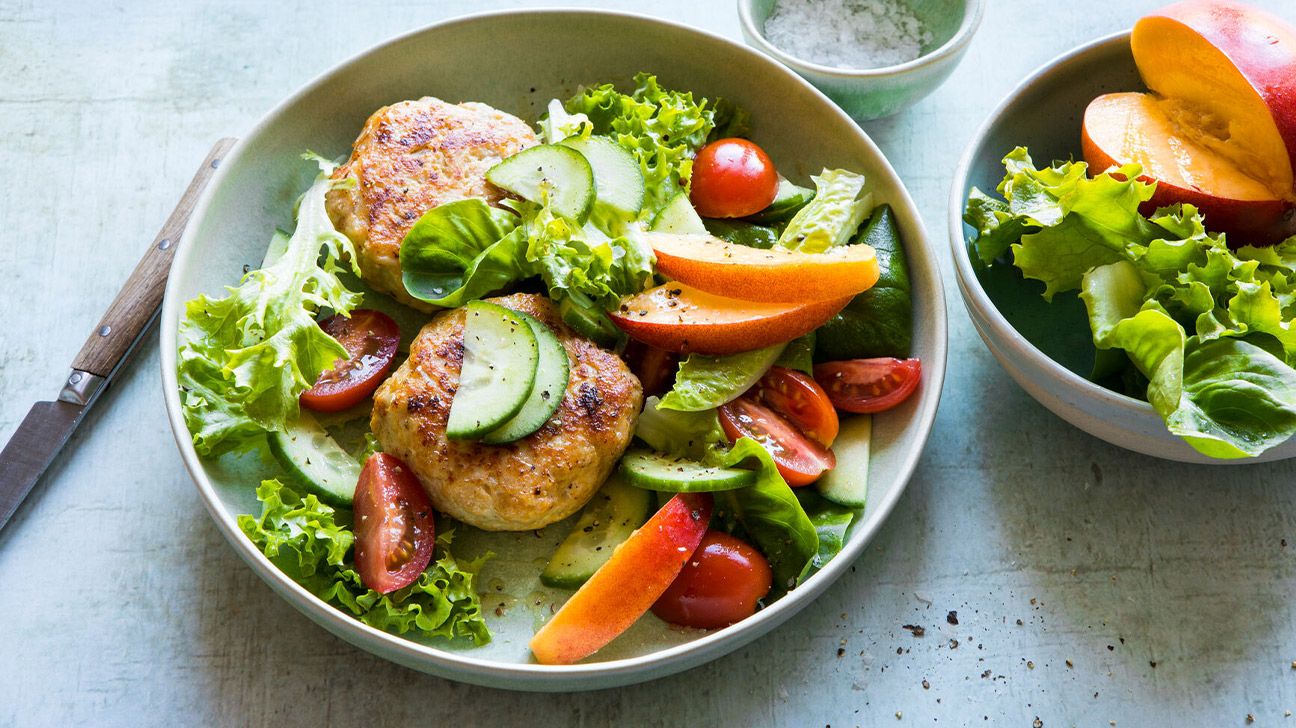What Happened When I Tried the Autoimmune Protocol Diet for Ulcerative Colitis
October 21, 2020
Content created for the Bezzy community and sponsored by our partners. Learn More

I have had ulcerative colitis and countless flare-ups for the past 12 years. During that time, I like to think that I have tried it all.
Various biologics, steroids, procedures, and diets all come to mind when I think of the different treatment options I researched and tried over the years.
I always heard great things about the Autoimmune Protocol (AIP) diet, an elimination diet used to treat symptoms of autoimmune diseases like ulcerative colitis, but never thought it was “for me.”
It wasn’t until I was in the middle of a never-ending, yearlong flare-up that I decided to give it a try and see if it could help me get into remission. Here is my experience.


What is the Autoimmune Protocol diet?
The AIP diet is similar to the paleo diet, which focuses on removing refined grains and sugar. It’s designed to remove foods that may trigger autoimmunity, inflammation, and imbalances in gut bacteria that occur in conditions such as Hashimoto’s disease, lupus, and inflammatory bowel diseases (IBD), including Crohn’s disease and ulcerative colitis.
The diet begins by eliminating foods that may trigger inflammation and development of autoimmunity, including:
- grains
- gluten
- nuts and seeds
- legumes
- nightshades
- eggs
- dairy
- sugar
- coffee
- alcohol
- food additives and artificial sweeteners
What’s left is basically fruits and vegetables, minimally processed meats, fermented foods, teas, and other natural foods that don’t fit into any of the categories above.
After adhering to the AIP diet for at least one month (ideally longer), the eliminated foods are gradually reintroduced into the diet, one at a time, to see what your food triggers may be.
Thanks to ulcerative colitis, my body is incredibly sensitive toward anything I put in it, so I will not try anything new with my diet unless it’s backed by science and hard facts.
The reason I was willing to give the AIP diet a try was because I discovered there were several research studies conducted specifically to find out if the AIP diet was effective for people with IBD.
For example, a 2017 study in the journal Inflammatory Bowel Diseases found that, in people with IBD, inflammatory markers decreased and IBD symptoms significantly decreased after following the AIP diet.
Why did I try the AIP diet?
I am coming out of a yearlong flare-up of ulcerative colitis, which is approximately 49 weeks longer than my typical flare-up.
It was a tough period of my life where I was sick, in agonizing pain, and no drug my doctor gave me seemed to get me back into remission.
I was desperate and I tried almost everything, including acupuncture, Chinese herbs, five different biologics, two steroids, and so many over-the-counter treatments.
To drive the point home even further, my best friend was my heating pad. You get the picture.
I kept hearing all about the AIP diet through my circle of friends with Crohn’s and colitis, so I became curious to learn more.
I am a huge believer in the power of food to heal the body. At that point, I was barely eating anything at all, so an elimination diet couldn’t be that hard for me. I thoroughly researched the protocol and decided to go for it.
My experience with the AIP diet
For me, the hardest part was sticking with the protocol for the first two weeks. It was more challenging than I anticipated and I struggled with staying on track more than I thought I would.
However, I began to find snacks that I liked and recipes I enjoyed making, and eventually got into a groove that worked for me.
Let’s be honest, eating at a restaurant is challenging with IBD no matter what, but AIP makes it even more challenging. For most of this time, I did not eat out at restaurants and chose to cook at home instead.
It’s not forever and I believe it was worth sacrificing a few meals out for my overall health. Plus, I saved a few bucks by eating at home, so it was a win-win.
One thing that really helped me was filling my cabinets with AIP-approved foods and ingredients before I started the protocol. If I had to figure it out after I started AIP, I would have never made it, or I would have had a meltdown in the grocery store.
By doing it in advance, I already had everything I needed when I was hungry or ready to cook dinner.
The effect on my IBD symptoms
I want to start this by saying that the Autoimmune Protocol isn’t a miracle diet. It takes consistency over a longer period of time to get the full effects. After about the fourth week on the AIP diet, I really started noticing a difference.
Prior to following the AIP diet, I was bloated with everything I ate and for almost an entire day afterward. Now, I am no longer bloated after every bite of food.
I was having trouble sleeping, which is something I have never struggled with in my life. Now, I am able to sleep through the night and feel rested in the morning.
I was also running to the bathroom multiple times a day with no relief in sight. With AIP, I had much less urgency to go to the bathroom. The urgency and rushing to the bathroom didn’t go away completely, but it did reduce the number of times significantly.
Overall, my quality of life greatly improved after the fourth week of consistently following the AIP diet.
I think it is important to note that, at the time, I was also on a high dose of prednisone and Stelara, a biologic used to treat IBD. This was not a food-only treatment plan, but rather a combination of traditional medicine and dietary elimination.
The reintroduction period
After the 5-week mark, I started reintroducing foods and found that I was still sensitive to corn. I bloated almost instantly after eating a homemade arepa, which is only made with water, corn, and a little salt.
On the other hand, I responded well to almonds and chocolate.
Outside of these three reintroductions, I started loosening the diet more and more and reintroduced all the other trigger foods around the same time. That means I couldn’t tell which foods were still triggering me.
It should be noted that experts recommend reintroducing one food item at a time, with a few days in between reintroductions. This way, you can identify what specific foods may be causing symptoms.
If I had to do it over, I would have been more patient in the reintroduction phase and slowly reintroduced each potential trigger food.
The takeaway
Overall, I highly recommend the AIP diet to anyone struggling with inflammation caused by an autoimmune disease.
Following the AIP diet can be challenging in the beginning, but a little prep work ahead of time will go a long way.
If you decide to try it, I recommend being patient and taking the time to do both the elimination and the reintroduction phases properly. If I choose to redo the elimination phase in the future, I will make sure to go slower on the reintroductions so I know which foods are still triggering me.
Working with a registered dietitian or another healthcare provider who specializes in autoimmune diseases is a good idea for those interested in AIP. A healthcare provider can give you tips, answer questions, and make sure that the diet is safe and appropriate for your specific needs and overall health.
Article originally appeared on October 21, 2020 on Bezzy’s sister site, Healthline. Last medically reviewed on October 19, 2020.
Medically reviewed on October 21, 2020
4 Sources


Like the story? React, bookmark, or share below:
Have thoughts or suggestions about this article? Email us at article-feedback@bezzy.com.
About the author